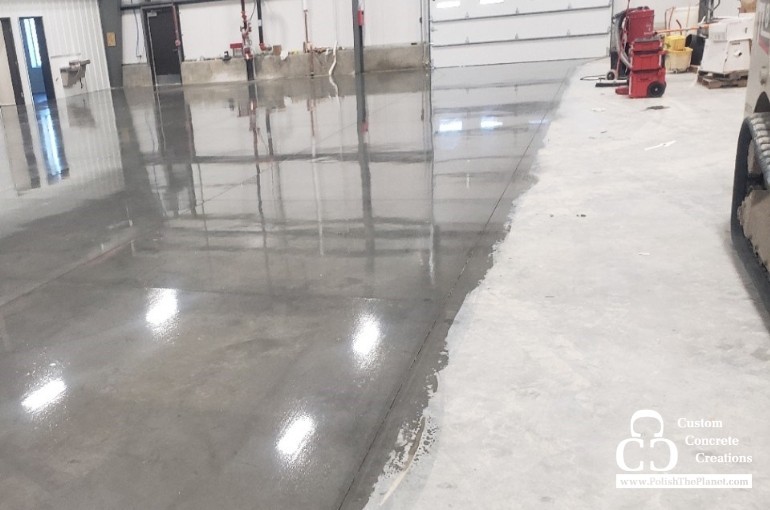
When you walk into a space with beautifully polished concrete floors, it's hard not to be captivated by their glossy sheen finish. But what lies beneath the surface is a fascinating process rooted in science and craftsmanship. Keep reading to learn about the science of polishing concrete!
The material
Before diving into the polishing process, it's crucial to comprehend the material itself — concrete. Concrete is a composite material made up of cement, water and aggregates, such as sand and gravel. When mixed together, these components create a liquid that can be poured into molds and forms. Over time, this liquid mixture solidifies through a process called hydration, forming a dense, durable material.
The foundation
The journey to a polished concrete floor begins with meticulous surface preparation. This step is essential to ensure a uniform and visually appealing finish. Surface imperfections, such as cracks, chips and stains, are addressed during this phase.
The science here lies in the selection of the right tools and techniques. Diamond grinding and shot blasting are common methods used to prepare the concrete surface. Diamond grinding involves the use of abrasive diamond discs to remove surface imperfections and expose the underlying aggregates. Shot blasting, on the other hand, uses high-velocity steel shots to clean and profile the surface, creating an ideal bonding surface for subsequent treatments.
Abrasion and refinement
Once the surface is adequately prepared, the real magic of polishing begins. This process is akin to refining a rough diamond into a dazzling gemstone. It involves a series of abrasive grinding and smoothing steps, and here's where science takes center stage.
Coarse grinding
In the initial stages, coarse diamond-embedded grinding tools are used to remove a thin layer of the concrete's top surface. This process exposes the aggregates within, creating a textured look.
Progressive grits
Polishing progresses through finer and finer grits of diamond tools. As you move from coarse to fine, you're essentially reducing the size of abrasive particles. This creates a smoother, glossier finish, similar to sanding wood.
Chemical hardening
During the polishing process, chemical densifiers are applied. These react with the free lime in the concrete to create calcium silicate hydrate, a compound that increases the concrete's density and hardness.
Final polishing
The final polishing steps involve resin-bonded diamond tools. These tools provide the highest level of shine and clarity to the surface. The science here is in the precise selection of tooling, which can vary based on the desired finish — whether it's a high-gloss shine or a satin finish.
Diamonds and consistency
The effectiveness of concrete polishing relies heavily on the quality and consistency of the abrasive tools used. Diamonds are the preferred choice for abrasives due to their exceptional hardness. The scientific classification of diamonds based on size, quality and concentration plays a pivotal role in achieving the desired finish.
Controlling temperature and moisture
Temperature and moisture levels also come into play during the concrete polishing process. Extreme temperatures can affect the curing of the concrete and the performance of diamond abrasives. Likewise, monitoring moisture content is crucial to prevent issues such as efflorescence (the formation of white, powdery deposits on the surface) and to ensure a consistent finish.
Art meets science
As the final polishing pad makes its last pass, the science of polishing concrete merges seamlessly with the artistry of craftsmanship. The result is a surface that not only shines with brilliance but also boasts exceptional durability and resistance to wear and tear.
Contact us today about polished concrete floors
The science of polishing concrete is a remarkable journey that uncovers the hidden beauty within a seemingly ordinary material. The journey from a rough concrete slab to polished concrete floors is a testament to science and skill. If you’re interested in improving your space, contact us today!
